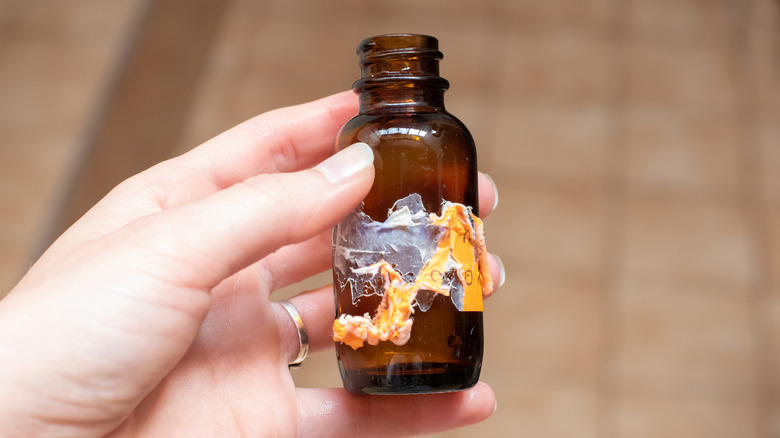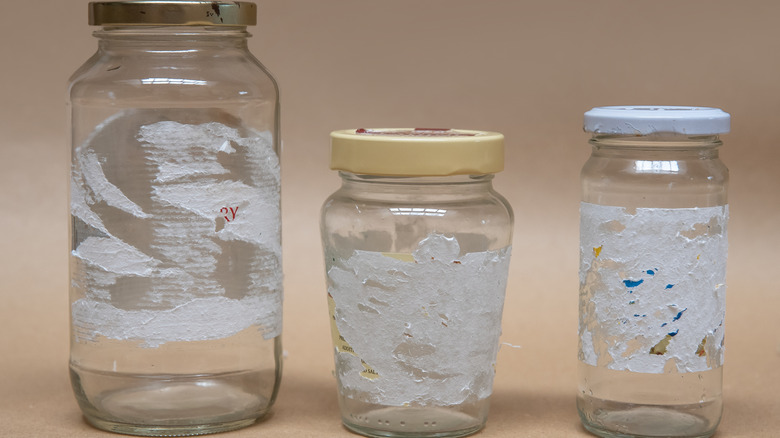Can Windex Help Remove Stubborn Glue Residue? Here's What We Know
We may receive a commission on purchases made from links.
You've probably been using Windex Glass and Window Cleaner for years, as have your parents before you. Designed, as the name implies, for streak-free cleaning of glass, there are many other ways you can use Windex around the home. One way to use this spray cleaner is to remove stubbornly sticky glue residue from glass.
Of course, this comes after you've done your due diligence by first cleaning the glass surface, wiping away any dirt you can, then letting it thoroughly dry. You can use Windex for this part of the process, too. Next, you'll use Windex as a solvent by applying it onto the sticky residue and letting it sit for a few minutes to soak in and take effect. If you think your adhesive will be particularly stubborn, you can let the solvent sit for up to 15 minutes to make the actual removal process easier. Then, use a soft cloth or sponge to clean the glue residue away with gentle, circular rubbing motions. If need be, you can also use a tool, such as a razor blade or the plastic edge of a credit card, to gently scrape away the residue that Windex has loosened for you. Be careful not to scratch the glass and to scrape away from yourself. Depending on how long your residue has been stuck and how stubborn it is, you may need to repeat the process a few times. When finished, avoid streaks by rinsing the glass with water and drying with a lint-free cloth.
Things to keep in mind when cleaning glue with Windex
While this hack should work to get rid of sticker residue, Windex may not always be the right choice to remove the stubborn stickiness from items. This will depend on the type of glue involved. Windex's components, including ammonia, detergents, and solvents, work to break the bonds in glue leftovers, making them easier to remove. It dissolves sticker residue and water-based glues like white craft or school glue. Windex also works to help remove cyanoacrylate glues, also known as super glues, by weakening the glue's bonds and making it easier to gently scrape the glue off your glass. However, Windex does not work on non-water-soluble glues, such as epoxies and construction adhesives, or on solvent-based glues like rubber cement. Other possible solvents for removing glue residue in these scenarios include rubbing alcohol or white vinegar.
You also shouldn't use the Windex cleaning method on tinted glass, where you risk removing the sticker that applies the tint. For glass with other specialized treatments, test a small area to see if the chemicals within Windex will react negatively and cause damage. You should also avoid cleaning plexiglass with Windex, as the ammonia-based cleaner can cause haze, yellowing, or deterioration of this acrylic product. The ammonia content in Windex also means you should take some proper safety precautions, such as wearing gloves and safety goggles, to avoid getting the cleaner in your eyes or on your skin as you're removing your glue residue. And, of course, make sure to use it in a well-ventilated area, away from open flames.

